Jersey Shore: Before and After Hurricane Sandy
Sandy's Aftermath
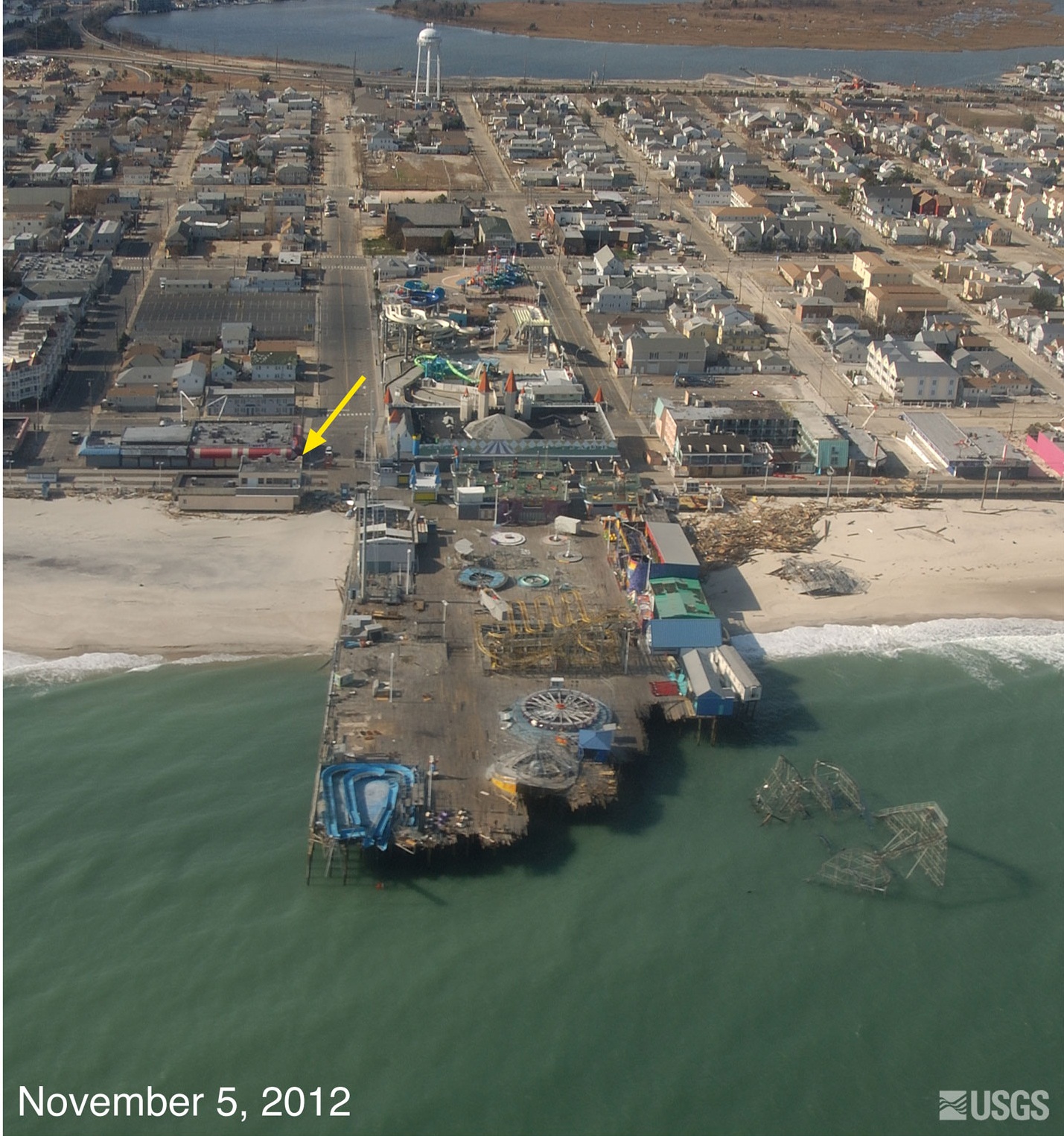
Hurricane Sandy made landfall in New Jersey on Oct. 29, packing winds of 80 mph and unleashing a destructive storm surge into communities along the shore. New images from the U.S. Geological Survey (USGS) show how points along the state's coastline looked before and after the deadly storm. Pre-storm photos in this gallery were taken on May 21, 2009, and post-storm photos were snapped between November 4 and 6, 2012. A yellow arrow in each image points to the same feature to serve as a reference point. (Above is an after image of the Seaside Heights Pier.)
Deal, N.J.

This photo shows how Sandy's waves ate away at rock shore protection structures. Large scarps are visible in the low cliff along this beach in Deal, N.J.
Mantoloking, N.J.
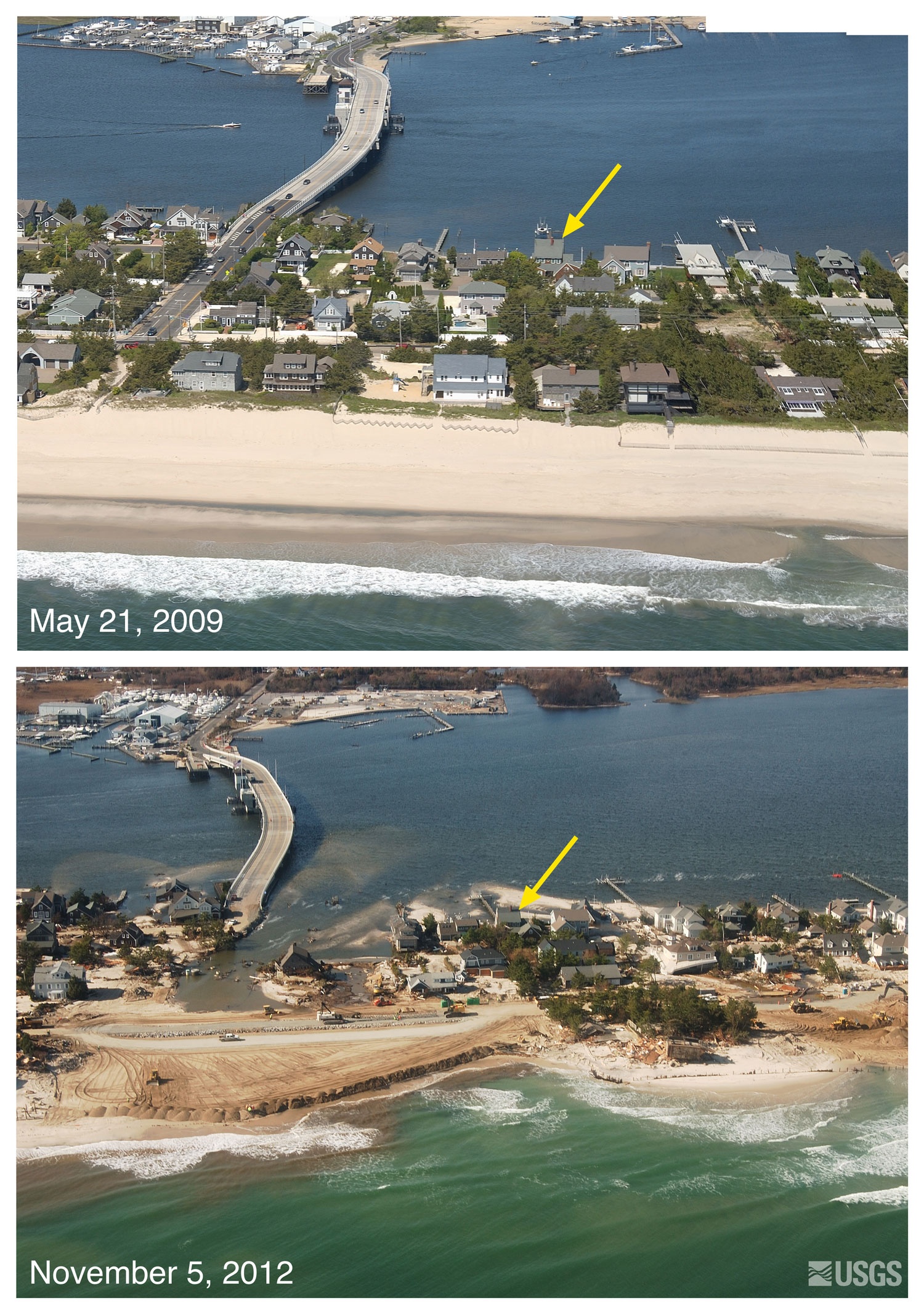
Waves swept across the barrier island at Mantoloking, N.J., eroding the beach, wrecking houses and roads, and pushing sand into the back-bay. Construction crews with heavy machinery can be seen in the post-Sandy image clearing sand from roads and pushing sand seaward to build a wider beach and protective berm.
Mantoloking, N.J.
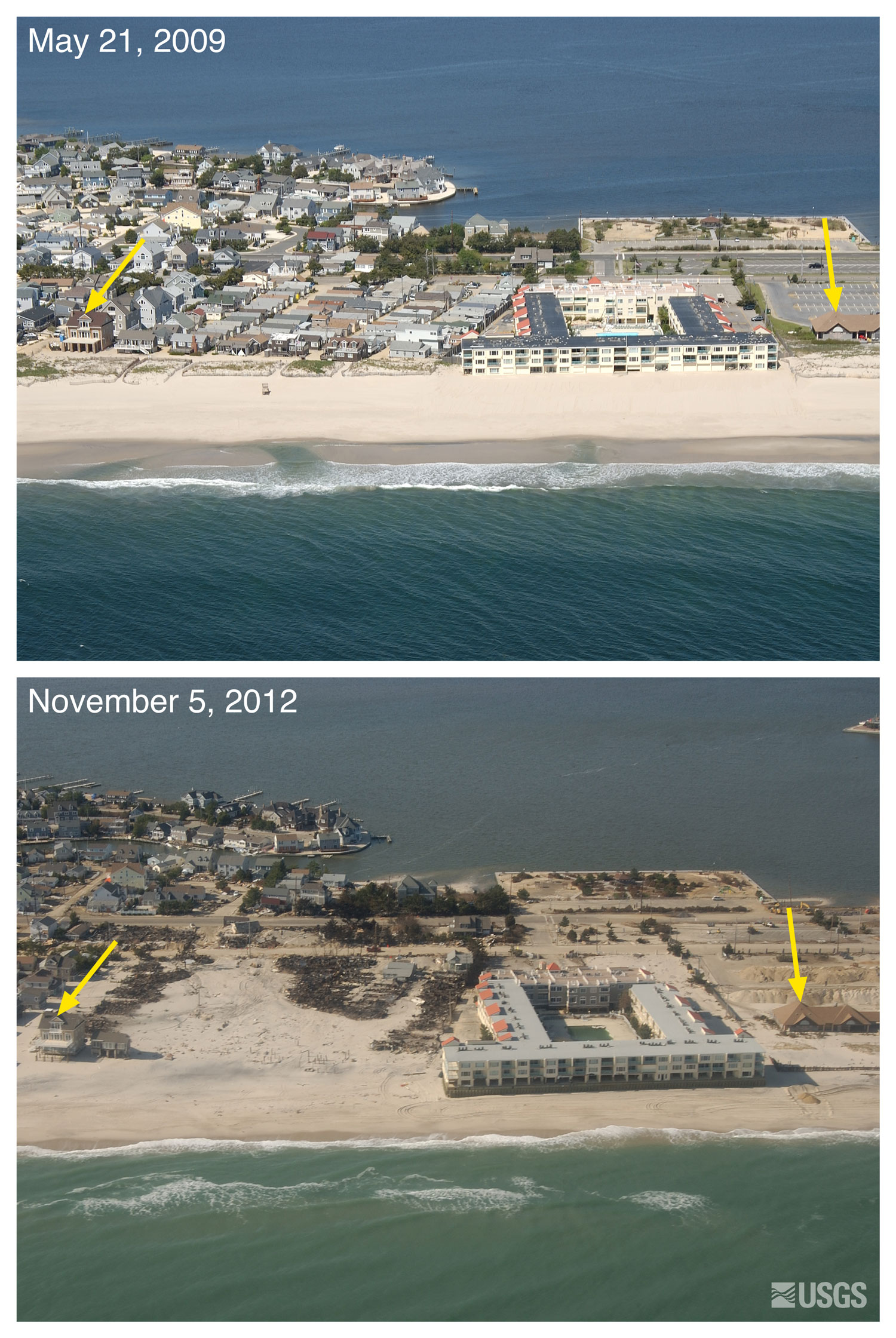
After being rocked by Sandy's surge, this part of Mantoloking was also ravaged by fire. The burned houses are visible in the center of the bottom photograph. Some of the sediment washed in by the storm was placed in large piles in the parking lot behind the building marked by the arrow on the right.
Seaside Heights Pier, N.J.
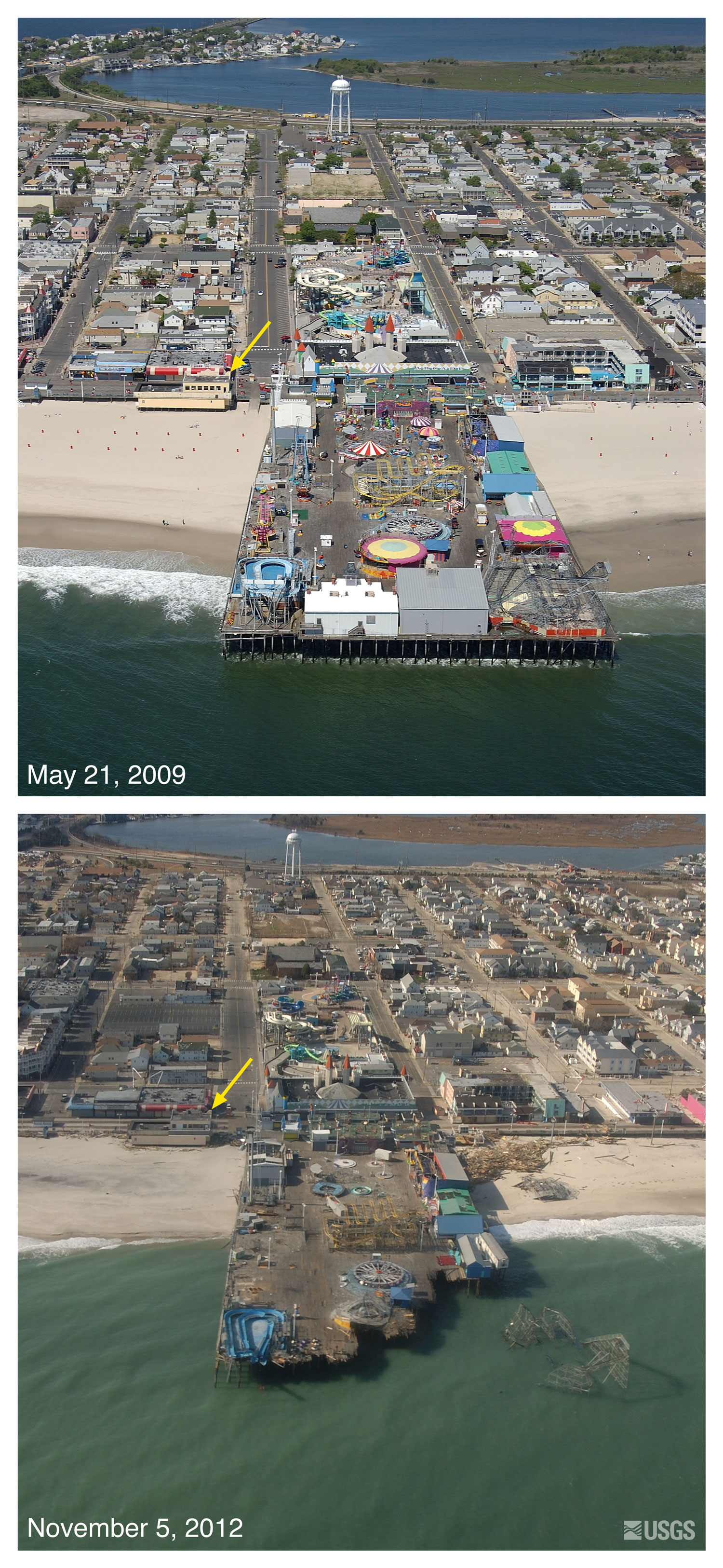
Sandy's powerful waves and surge destroyed the edge of the Seaside Heights Pier, tossing its iconic roller coaster into the ocean. Sediment deposited on the island is visible in the background and indicates that overwash also occurred here.
Seaside Heights, N.J.
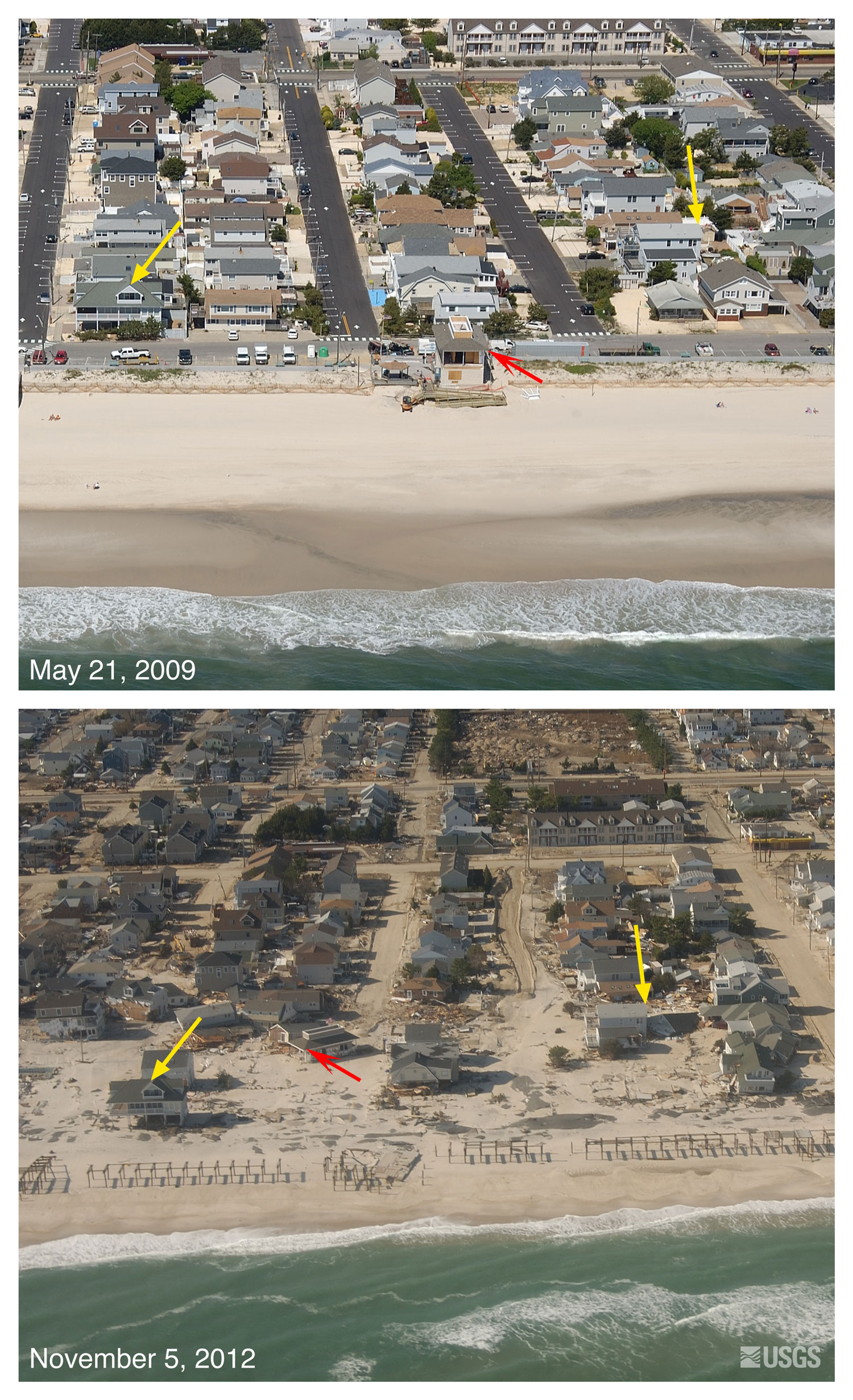
The storm also flattened dunes and deposited sand on roads in Seaside Heights. The red arrow points to a building that was swept off of its foundation and moved about a block away from its original location.
Long Branch, N.J.
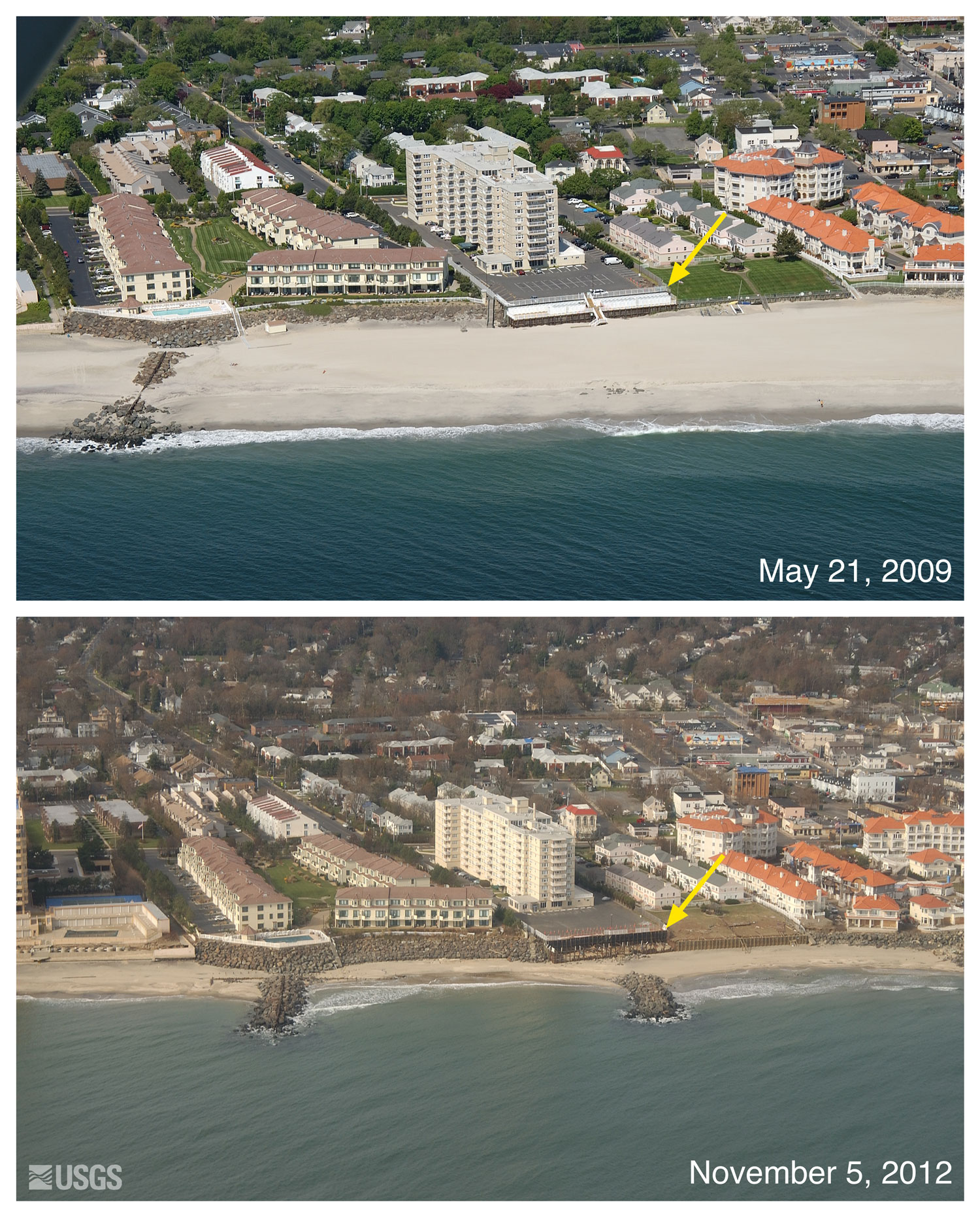
Storm waves and currents removed sand from the beach in Long Branch, N.J., exposing erosion control structures, including rock walls, concrete walls, and groins that protrude perpendicular to the beach.
Get the world’s most fascinating discoveries delivered straight to your inbox.

